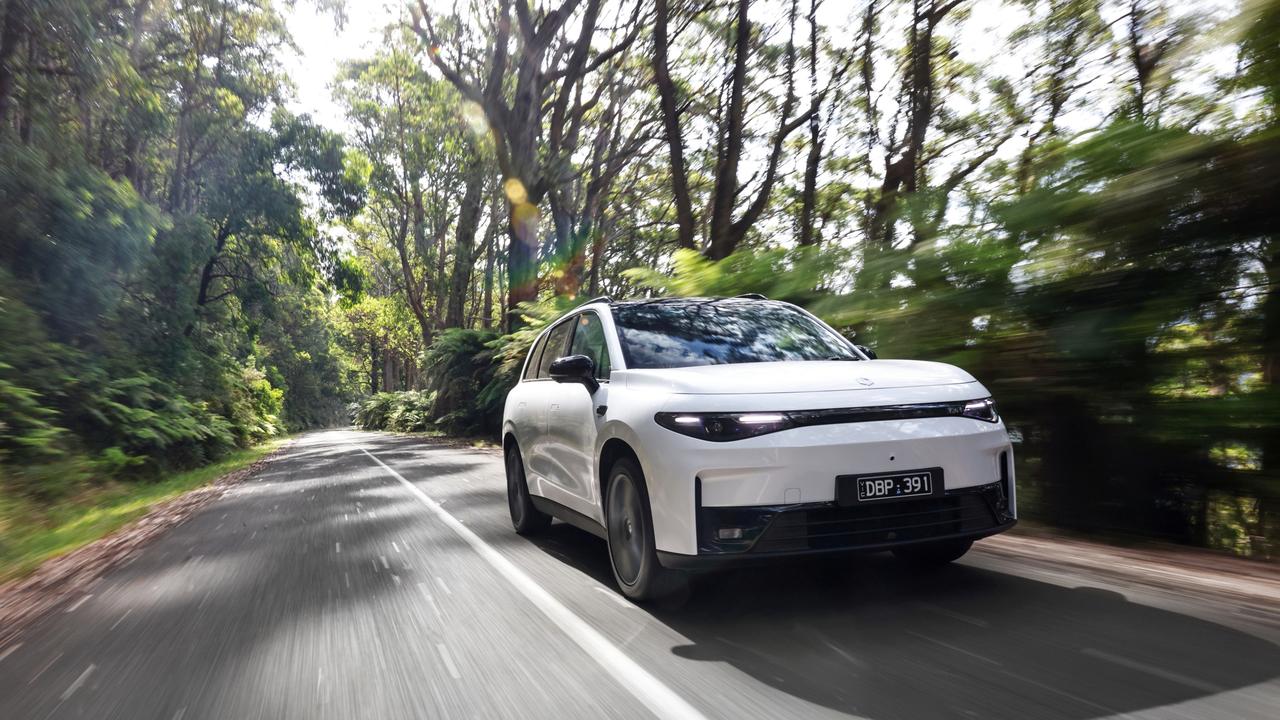Polestar 3 review: Tesla rival heads up-market
Its first model was designed to go head to head with the Model 3 but this start-up brand has a very different target in mind with its second effort.
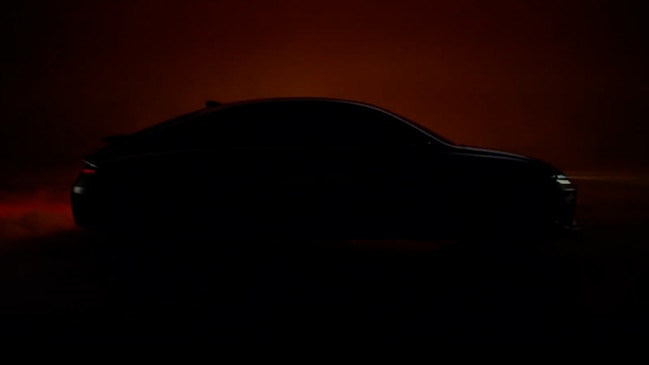
New Cars
Don't miss out on the headlines from New Cars. Followed categories will be added to My News.
There’s no room for high-rise headwear in the Polestar 3. This is a deliberate choice, explains Maximilian Missoni. The Polestar design chief says most SUVs have too much internal height.
“That extra space you are carrying around above your head” isn’t really necessary, he argues. It’s not good for looks, either. So the Polestar 3 has been designed to disappoint habitual top-hat wearers.
Everyone else, though, is likely to appreciate the low, lean look of this big SUV. The arrival of the Polestar 3, scheduled for August or September, is a major moment for the Sweden-based EV-only brand.
Polestar has carved a niche for itself in the Australian EV market over the past few years while selling only one model. That car, the Polestar 2, has been one of the few relatively affordable alternatives to Tesla’s top-selling Y and 3.
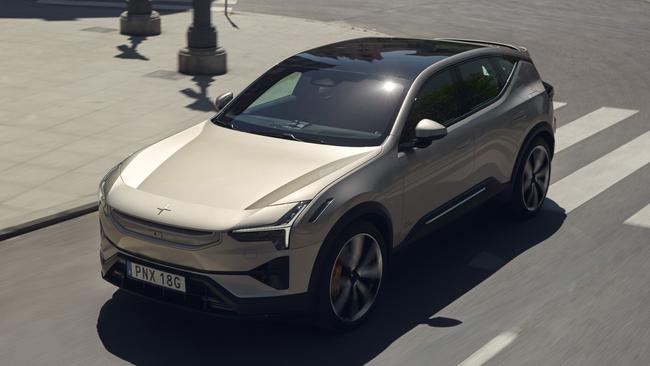
The Polestar 3 is designed to take the brand up-market. It will cost about twice as much as the Polestar 2. The top of the line Polestar 3 Long Range Dual Motor is $141,900 with the power-boosting “performance pack” option. Without the pack it’s $132,900.
So it will be positioned to compete with EVs from established premium players. The Swedish brand says rivals include the Audi Q8 e-tron, BMW iX, Mercedes-Benz EQE SUV and Porsche Cayenne.
But does the Polestar 3 have the class, character, looks, tech, driving range and performance to take them on? The one-word answer is yes.

Polestar, if you didn’t already know, is an EV-only spin-off from Volvo. Both are owned by Chinese auto-industry giant Geely. This relationship means the new Polestar 3 has basically the same battery pack, electric motors, suspension, steering, brakes and safety and infotainment systems as Volvo’s coming EX90. This hardware and software set combined provide a solid basis for the Polestar 3.
Despite the tech twinship, there are major mission differences. The EX90 will be sold as a seven-seater, so is tall and practical looking. The sleeker and sportier Polestar 3 will only be sold as a five-seater.

In the metal the Polestar 3 is even lower than it looks in photographs. Lovelier, too, with a tapered profile and elegantly sculpted form. The nose provides the design highlight. There’s an aero-aiding wing in the leading edge of the bonnet, above a so-called “smart zone” that houses many of the vehicle’s forward-facing sensors.
“We’re moving from breathing to seeing,” is the neat way exterior designer Subum Lee describes the Polestar 3’s pseudo grille.
The interior is great, if you like minimal. It’s very Scandinavian in here, luxurious and comfortable without showiness. The front seats are excellent. Rear legroom is massive and needs to be that way because the seat is relatively low set.
A portrait-oriented touchscreen is the centrepiece of the instrument panel. Polestar designs the icons, graphics and animations for its displays in-house and they’re superb. Android Automotive powers the navigation (and some other infotainment services) so it delivers the familiar look of Google Maps.
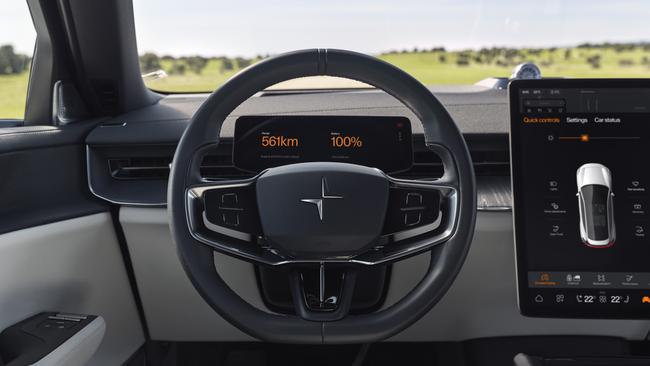
The Polestar can run Apple CarPlay if needed but it’s not so well integrated.
Polestar is following Tesla’s lead in making many frequently used functions accessible only via on-screen menus but they’ve done a better job with the operating layout and logic.
The Polestar 3 has a whopper of a battery pack (111kWh, of which 107kWh is usable) that’s a range-anxiety killer. The standard Long Range Dual Motor is claimed to be good for about 630km, though the performance pack reduces this to 560km.
It will be a quick charger, too. Polestar says it’s capable of sucking up to 250kW from a DC fast charger, so going 10 to 80 per cent full will take about 30 minutes. Connected to a home wallbox, its on-board AC charger will accept up to 11kW, taking 11 hours to charge from zero to 100 per cent.
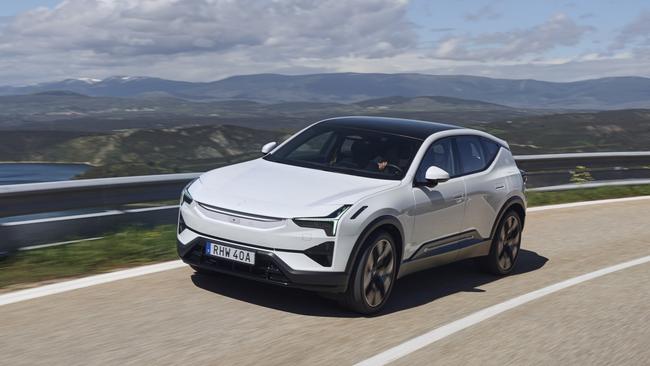
Acceleration is the smooth, swift, silent and seemingly effortless surge expected in a dual-motor EV. Ride comfort on the standard air suspension is excellent and the handling is superb.
Even though the Polestar 3 is a wide, long and heavy vehicle, it’s a surprisingly agile thing on the road. It seems to shrink once its wheels are rolling, such is the precision of its steering, suspension and braking systems.
The Polestar 3 looks and feels totally European, but – get ready to eat that hat – it’s manufactured in a Geely factory in China.
Originally published as Polestar 3 review: Tesla rival heads up-market


